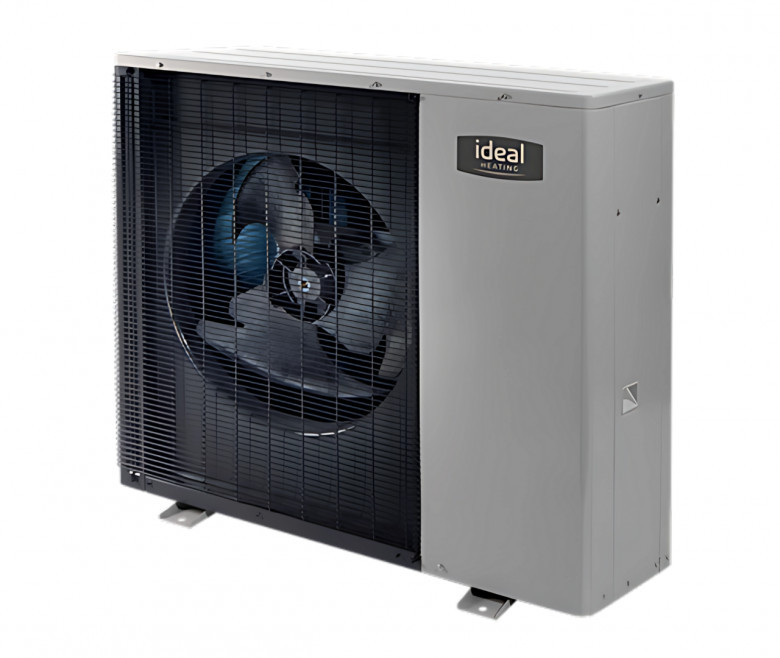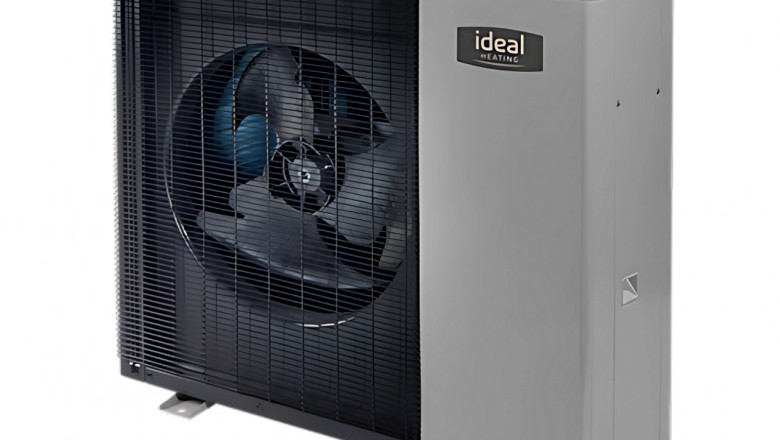views
As the UK continues its journey toward a net-zero future, homeowners are exploring more sustainable ways to heat their homes. One solution gaining significant attention is the Air Source Heat Pump (ASHP). Backed by government incentives and environmental benefits, these systems are becoming a top choice for heating homes without relying on fossil fuels.
But are they the right fit for UK properties, especially given the country’s varied housing stock and often chilly climate? Let’s explore how air source heat pumps work, their benefits and limitations, and whether they're a smart move for your home.
What Is an Air Source Heat Pump?
An air source heat pump is a low-carbon technology that absorbs heat from the air outside and uses it to warm your home and provide hot water. It works similarly to a refrigerator but in reverse — instead of pushing warm air out, it pulls warmth in from the environment, even when temperatures drop below freezing.
There are two main types of ASHPs:
-
Air-to-Water Heat Pumps: These are the most common type used in UK homes. They heat water and distribute it through your radiators or underfloor heating system and store it in a hot water cylinder.
-
Air-to-Air Heat Pumps: These heat the air directly and are more like air conditioning units. They can also provide cooling in the summer.
How Do They Work in Cold Weather?
One of the most common concerns in the UK is whether heat pumps work well in colder months. The good news? Yes, they do. Modern ASHPs are designed to operate efficiently even in sub-zero temperatures. While their efficiency may drop slightly in extremely cold conditions, they can still extract enough heat from the outside air to warm your home comfortably.
Scandinavian countries like Sweden and Norway, which have even colder winters than the UK, have widely adopted this technology — proving that it can work in low-temperature climates.
Are They Suitable for All UK Homes?
Whether an air source heat pump is suitable for your home depends on a few key factors:
1. Insulation Quality
For a heat pump to operate efficiently, your home must be well-insulated. Older homes with poor insulation may need upgrades — such as loft insulation, cavity wall insulation, or double glazing — before installation.
2. Space Availability
ASHP units are about the size of a washing machine and are installed outside your home. You’ll need a suitable space for the outdoor unit with good airflow.
3. Existing Heating System
Heat pumps operate best at lower temperatures than traditional gas boilers. They’re most effective when paired with underfloor heating or large surface-area radiators.
4. Planning Permission
Most domestic installations in the UK do not require planning permission, but it’s worth checking with your local authority, especially in listed buildings or conservation areas.
Benefits of Air Source Heat Pumps
Lower Carbon Emissions
ASHPs use electricity rather than gas or oil. When powered by renewable electricity (like from solar panels), they can drastically reduce your home’s carbon footprint.
Energy Efficient
For every unit of electricity used, a heat pump can generate three or more units of heat. That’s up to 300% efficiency — far higher than traditional boilers.
Reduced Heating Bills
While electricity costs are currently higher than gas, improved efficiency means you could still see long-term savings, especially with rising gas prices or if combined with solar energy.
Government Grants
The UK Government offers financial support through schemes like the Boiler Upgrade Scheme (BUS) or ECO4, which can cover part or even all of the installation cost for eligible households.
Low Maintenance
Once installed, heat pumps require minimal maintenance. Annual checks and basic upkeep are usually sufficient.
Challenges and Considerations
Upfront Costs
Installation can cost between £7,000 and £14,000, depending on the system and property. However, grants can significantly reduce this burden for eligible households.
Installation Disruption
You may need upgrades like new radiators or better insulation before installation. This could add to initial time and cost.
Noise
The outdoor unit makes a low humming noise — not much louder than a fridge — but it’s worth placing it away from bedroom windows or neighbouring properties.
Real-Life Suitability: Case Study Examples
-
Modern Homes: New-builds with excellent insulation and underfloor heating are ideal candidates for ASHPs. Installation is usually straightforward and very effective.
-
1950s Semi-Detached: With cavity wall insulation and upgraded radiators, ASHPs can work well. Government grants often help with the retrofit costs.
-
Rural Homes: Off-grid properties that rely on oil heating can benefit the most. Switching to ASHPs can significantly reduce fuel costs and carbon emissions.
Grants and Incentives Available
To encourage households to adopt low-carbon heating, the government offers multiple financial support schemes:
-
Boiler Upgrade Scheme (BUS): Offers £7,500 upfront to support ASHP installation.
-
ECO4 Scheme: For low-income and vulnerable households, this can cover the full cost of a heat pump, insulation, and more especially if you're on benefits or have a low EPC rating.
You can check your eligibility through approved providers like Simple Green Energy, where assessments are often free and take just a minute.
Should You Switch to a Heat Pump?
Here’s a quick checklist to help you decide:
Do you want to reduce your carbon footprint?
Is your home well-insulated or are you willing to upgrade it?
Are you planning to stay in your home long-term?
Do you want to future-proof your home as gas boilers are phased out?
If you answered “yes” to most of these, an air source heat pump could be the right solution for you.
Final Thoughts
Air source heat pumps are an excellent fit for many UK homes — especially as the country moves away from fossil fuels and toward renewable energy. With the right insulation and setup, they offer a clean, efficient, and cost-effective way to heat your home.
And with generous government grants now available, there’s never been a better time to make the switch.























Comments
0 comment